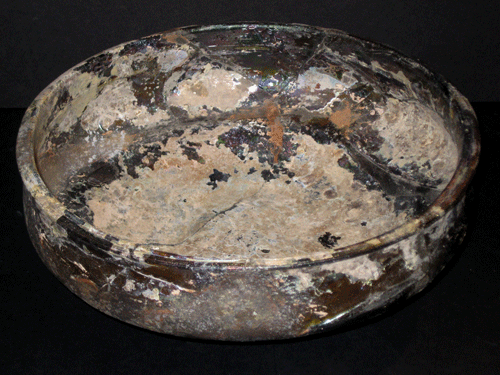Islamic Glass Bowl, 800 CE - 1200 CE
Glass
8.8 x 3.3
SF.202
In order to understand and appreciate Islamic glass fully, the study of undecorated utilitarian vessels is just as crucial as that of elaborately embellished pieces. A revolution in glass making...
In order to understand and appreciate Islamic glass fully, the study of undecorated utilitarian vessels is just as crucial as that of elaborately embellished pieces. A revolution in glass making techniques took place in the 1st century B.C in the Syrio-Palestinian region. For centuries craftsmen had known how to produce glass objects by casting them in moulds or forming the molten glass around a removable clay core. However these methods were labour intensive and time-consuming. The invention of glass-blowing enabled faster production and greater possibilities in terms of the variety of shapes that could be achieved. The use of glass for everyday purposes also increased dramatically, a trend that continued into the Islamic period.
This magnificent shallow bowl is cylindrical in shape and tapers towards the base. The rim is slightly wider than the body of the vessel. The glass itself is aubergine in colour but has acquired an opaque milky/grey patina caused by weathering over the centuries. Although extensively restored, this piece is a wonderful example of a utilitarian vessel produced during the Islamic era. (AM)
This magnificent shallow bowl is cylindrical in shape and tapers towards the base. The rim is slightly wider than the body of the vessel. The glass itself is aubergine in colour but has acquired an opaque milky/grey patina caused by weathering over the centuries. Although extensively restored, this piece is a wonderful example of a utilitarian vessel produced during the Islamic era. (AM)
